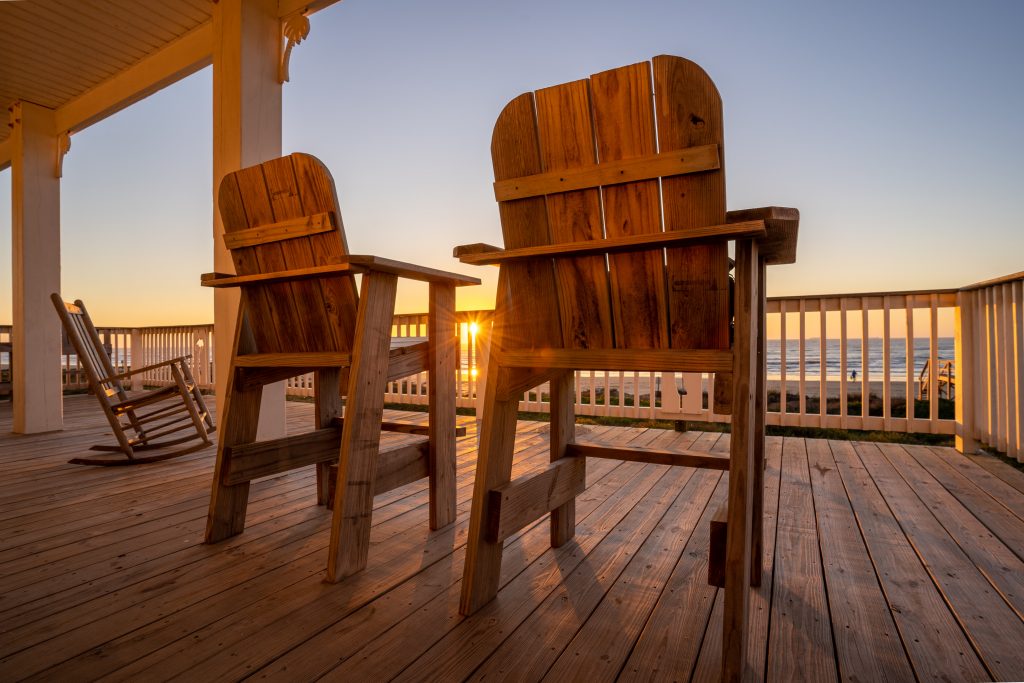Outdoors, the wood is subject to various aggressions (mainly UV, bad weather, etc.), which can cause various alterations:
- Physical deterioration of the wood: expansion, deformation, cracks, fungi. Although, there are woods that are naturally resistant to aggression (exotic woods), protecting your wood will prolong its life.
- Aesthetic alteration of the wood: the color of the wood becomes dull under the effect of UV rays, this is also known as greying of the wood. If your wood is only grey, there is no physical alteration of the wood, its technical characteristics are then preserved.
However, it should be noted that wood weathering varies from one environment to another. For example, at the seaside, the wood will deteriorate much faster than in a more clement environment.
Why Protect Your Exterior Wood?
To avoid all these inconveniences, it is essential to protect outdoor woods (terraces, cladding, garden furniture, etc.). There are various products that you can find, for example, in this online shop. A distinction is generally made between film-forming and non-film-forming products. We advise you to protect your wood in the spring when the temperatures are ideal (not too hot or too cold). In general, we advise you to choose a product that respects the environment and your health. Prefer products in aqueous phase that do not contain toxic substances, unlike products in solvent phase.
Filmogenic Products
To protect exterior wood, you can use products such as stains or paints. These products form a light film on the surface of the wood to make it waterproof and resistant to damage. The major disadvantage of these products is the risk of chipping. Stains are often not recommended for use on terraces (a saturator is preferred) because of the risk of chipping. Wood stains are well suited for vertical supports such as cladding or shutters. Maintenance is also difficult as sanding is required to apply and maintain the product.
Non-Film-Forming Products
Non-film-forming products do not form a film on the surface of the wood. They are mainly oils or saturators. On this site for wood, you can find many colorless or tinted saturators. We advise you to choose coloured wood saturators. Indeed, these products contain pigments, and it is the pigments that protect against UV rays and slow down the greying of the wood in particular. However, if you wish to use a colourless saturator, first apply an undercoat with a brush or roller to protect the wood against UV rays. Unlike film-forming products, saturators preserve the natural look and feel of the wood. Also, these wood products do not flake off.
Once the saturator has been applied, you will need to maintain it by applying a new coat of product every year or every two years on previously cleaned wood. You can find an excellent range of cleaning products on this website. As you will see, when your wood tarnishes, the product loses its protective power, it is then time to apply a new coat. Unlike stain or paint, maintenance is carried out without sanding.








